Seeking Uniformity: Differences in Battle Dress, Field Cut and Combat Cut Uniform Tops
Seeking Uniformity: Differences in Battle Dress, Field Cut and Combat Cut Uniform Tops
- Seeking Uniformity: Differences in Battle Dress, Field Cut and Combat Cut Uniform Tops
- Seeking Uniformity: Differences in Battle Dress, Field Cut and Combat Cut Uniform Bottoms
Coalition forces that initially deployed to Afghanistan in 2001 were mostly equipped with clothing and tactical gear that was similar to what they might have deployed with to Iraq in 1991. By comparison, the gear that was issued and available on the market by 2011 had taken some enormous leaps forward.
Continuous years of fighting in the Gulf region and a large civilian market demand, combined to push private industries to expand and innovate at a previously unprecedented rate. Much like the observable trend in the firearms market, the latest and greatest in tactical gear has come less and less from military development labs and more increasingly from the civilian owned and operated manufacturing industry.
Fast forward to where we are right now and the range of choices on the market when it comes to “tactical apparel” is reaching truly monstrous proportions. It can be daunting for someone who hasn’t spent a great deal of time exploring the options, fabrics and different cuts or styles commonly employed to know what to select. It’s also tough to know how much you need to spend to acquire a set of clothing that will reliably facilitate any task you may need or wish to perform. This could be tasks for duty, recreational sporting, or any potential combative situation that a citizen may encounter for any reason, whether real or simulated. The needs and reasons are categorically not what I’m here to dissect.
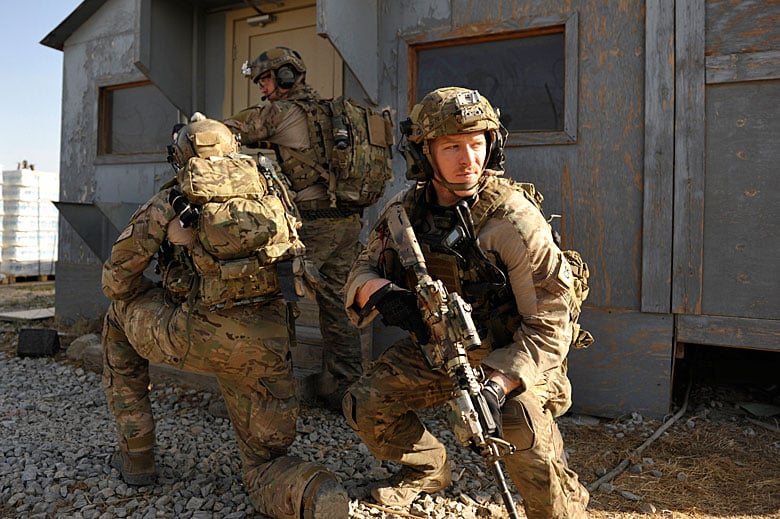
For the sake of this piece, we’re assuming the reader has decided they do require (for whatever reason) a set of clothing in either a camouflage pattern or some drab color. They expect to be undertaking outdoor tasks which could likely employ firearms or other related equipment and they’ll most likely be exposed to some conditions that are less permissive than an air conditioned lounge.
I’m going to primarily be looking at overall cut, style and feature sets vs. fabric types, specific brands, or specific products. This piece will focus on the typical Poly/Cotton and Nylon/Cotton apparel that’s most prevalent for temperate and arid climate military issue. However the concepts will also apply to level 5/softshell and all-synthetic clothing that’s pertinent for other environments and different activities. Given the massive variety of apparel that’s currently issued to different military forces and available commercially, trying to compare or review even two or three specific products against each other would most certainly have to be an entire separate article.
In my mind, there are three main archetypes of clothing that you might wish to consider for personal application, whatever that application is. At one end of the spectrum you have simple clothing that offers reliable utility and a low cost. At the other end, you’ll find more complexity in construction to provide an expanded feature set and of course a price tag to match. Working from the top and moving down, I’ll examine some key characteristics of these three generalized styles of uniform to hopefully provide you with the foundation of information you might need when making a purchase.
Classic Battle Dress Uniform Shirt
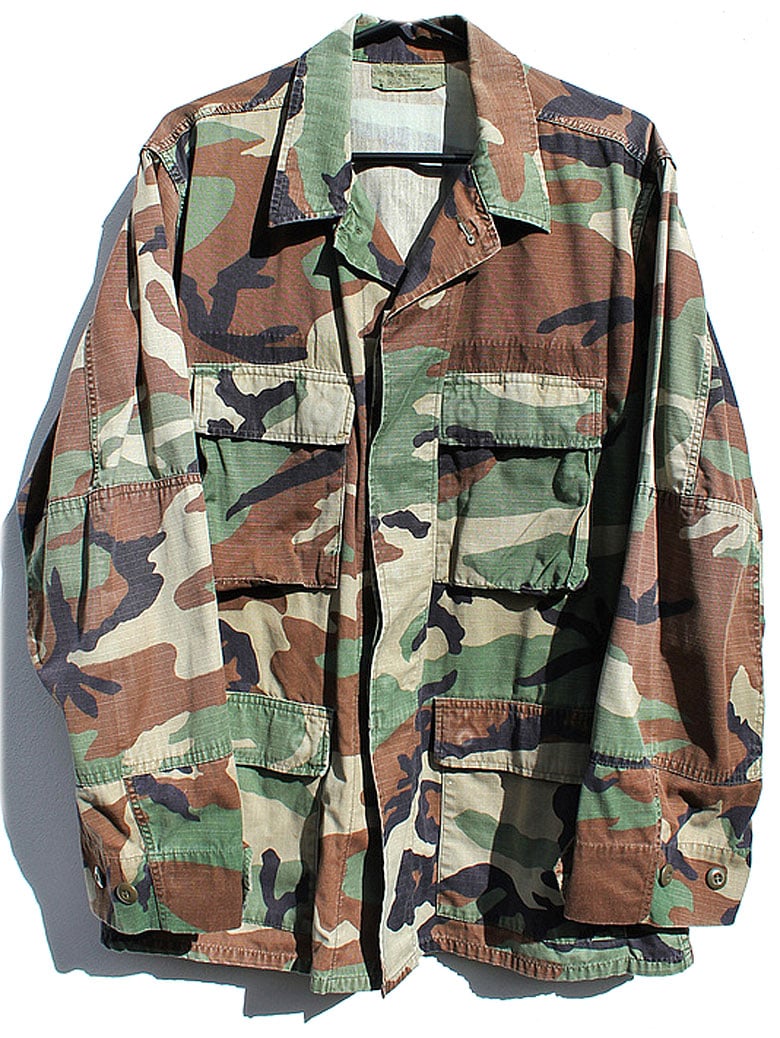
Everyone that served from the late 80’s through to the early 2000’s will be intimately familiar with today’s most widely recognized style of military uniform. This category includes the U.S. issue Battle Dress Uniform (BDU), elements of British Combat Soldier 95 (CS95) and the many similar types of uniform commonly issued in Woodland patterns through the 1990’s in Europe and North America.
In many ways, the basic cut of these shirts is a throwback to some even older styles of uniforms, because nothing of real significance actually changed in terms of layout throughout almost the entire 20th century. The pockets stayed in the same places and the collar is still designed to fold open at the top like a dress shirt. However, the fabrics were improved over the years and of course camouflage patterns became the norm after WWII in place of flat khaki or olive drab choices.
Thankfully, concerns about smart, business-like appearance did gradually fade away in military service. However realistically you’re still looking at a basic torso covering garment with a few pockets that are built to be slightly more practical for carrying items than the aesthetic chest pockets on a civilian suit/dress shirt. The fabric used is the key to utility and practicality, with the generally roomier cut allowing more freedom of movement being a close second.
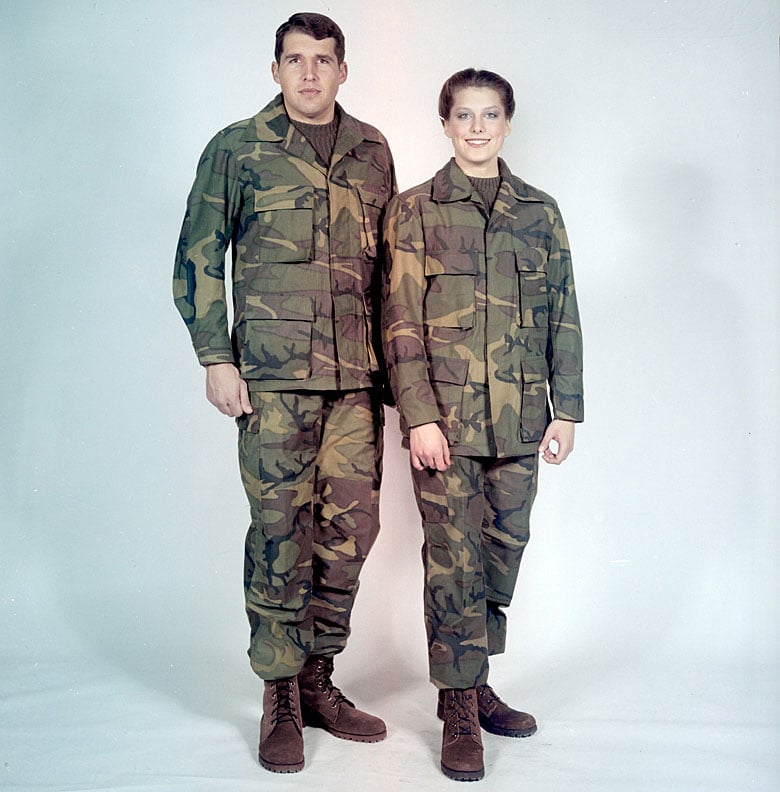
Key features generally found on a shirt of this type include the following:
Billowed Chest or Abdominal Pockets: These expandable pockets could carry lots of small items and worked well with the webbing gear of the era, However, these pockets are often inaccessible when wearing protective armor vests or plate carriers that shield the vital organs from shrapnel and small arms fire.
Button Closures: These closures were used for pockets, cuffs, main front access and collars. Buttons are simple, silent, resilient and easy to repair, but will most likely create pressure points under armor and can be tricky to fasten and unfasten with cold or gloved hands. That said, they can be relied upon to keep a pocket closed underwater, whereas hook and loop can fail to secure when drenched.
Not “Tucked-In” Friendly: U.S. issue BDU’s specifically weren’t designed to be tucked in, on account of the lower pair of pockets. This makes them somewhat less compatible with modern belt rigs that are intended to interact with the loops on your pants. You can still tuck in the shirt, but it would be a good idea to remove the lower set of pockets if you see yourself doing so frequently.
Lack of Upper Arm Pockets or Loop Fields: In general, there are no arm pockets or areas of loop on these shirts to facilitate ID patch mounting. This is a (very) small bonus in some environments, as loop does a great job of accumulating debris. Bits of grass, small twigs, plant seed pods, sand and snow can all build up in exposed loop.
Lack of Collar Closure Method: Although many service members will have spent the majority of their time with their woodland shirt collars neatly ironed and folded open, the facility is still there to do up that top button and stand the collar up to protect the wearer’s neck. However, the collar style does not suit this mode of wear as well as a modern shirt because there’s no front closure method to hold the fabric in the vertical alignment. Though a rifle sling will often do a good job in this regard.
Despite being out of service for some years now, U.S. Woodland and DPM uniforms are still plentiful on the secondhand market. Not only be can they be obtained very cheaply as military surplus, but some are available in high quality fabrics that are often used in the construction of substantially more expensive items on the commercial market. Don’t worry if you don’t have a good surplus store around you, eBay will always have plenty of listings for this sort of clothing. Western military forces were much larger a couple of decades ago and the classic U.S. Woodland and DPM uniforms (along with many European equivalents) were produced in such vast quantities that they’ll be still available at good prices for many years to come.
Modern Field-Cut Shirt
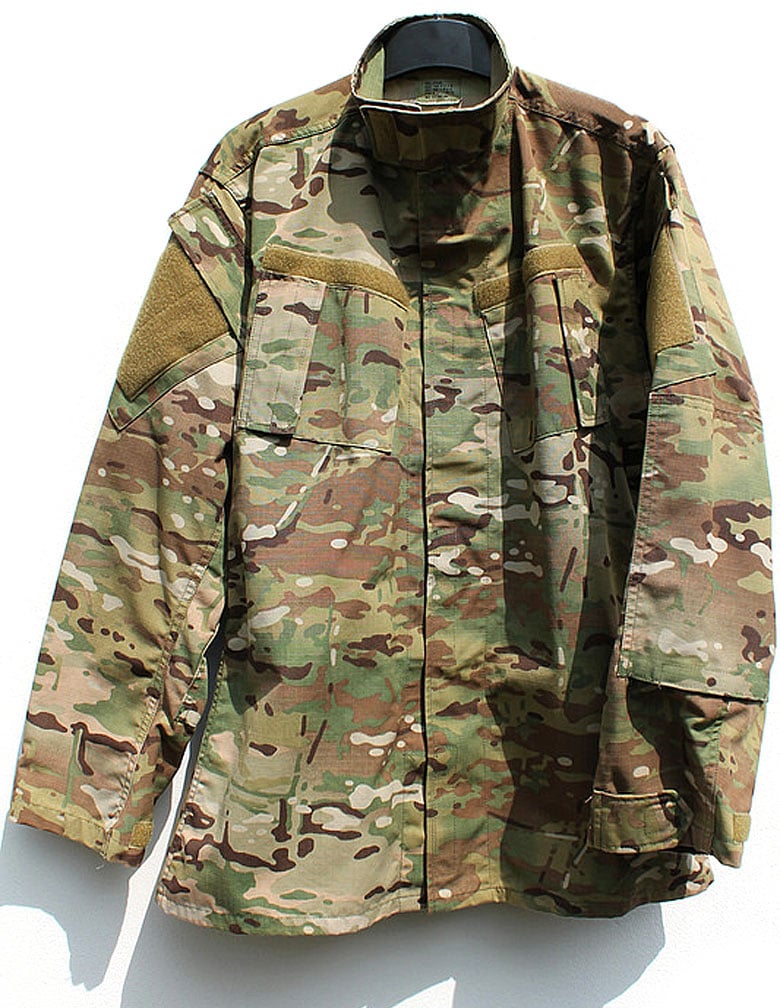
For those currently serving, this is the uniform archetype you will be wearing around base or for less strenuous training activities. Here we’re discussing the U.S. Army Combat Uniform (ACU), British Personal Clothing System (PCS) items and pretty much any uniform that provides basic utility for the modern age, but is still aimed at barracks wear, rather than being an all-out combat specific garment. The shirts in this category were born of the “RAID Modded” BDU shirts that experienced troops made in a time period that straddles the turn of the millennium, using their standard issued shirts as a base for alteration and improvement.
The first historical examples of such modifications that I know of were exhibited all the way back in WWII by U.S. Paratroopers, but there may be even earlier instances out there. Airborne troops would add pockets to sleeves that were far easier to access than the abdominal pockets once they had their web gear on. They would also add heavier duty fabric to high wear areas like the elbow, alongside some other improvements that generally reinforced the garment. It took a very long time for military forces as a whole to get back around to concepts like these for universal issue, but once Kevlar soft armor and ceramic plates became affordable enough to issue to everyone, an appropriate shirt was needed to wear in a post-Cold War age.
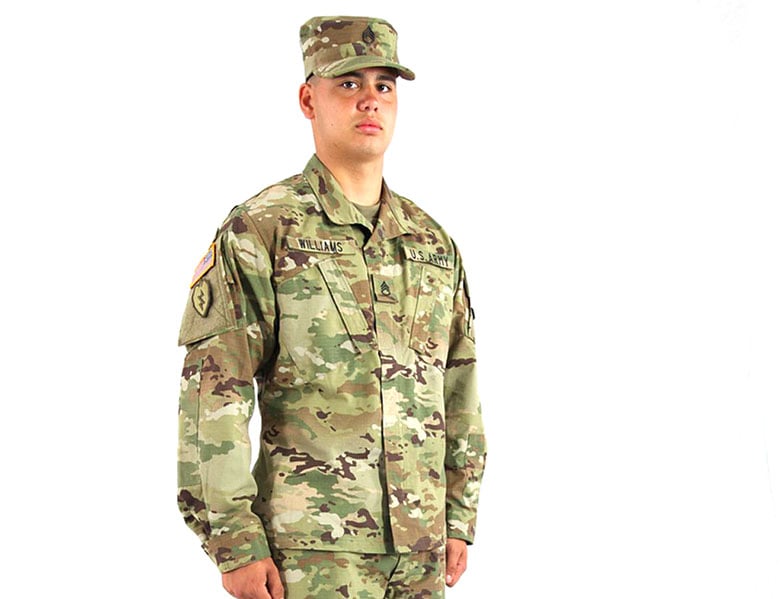
Some key features integrated in to this shirt style are as follows:
Internally Mounted Chest Pockets: These pockets are often lacking pleats or billows, which completely minimizes their profile. This means there’s less bulk of fabric underneath body armor, but you do lose some capacity. Realistically if you were to fill the pockets in an older BDU shirt all the way, you’d be overloading them and small items would be difficult to locate. So this newer design is more practical for the types of small or narrow items you might store in your shirt pockets (medical kits, note pads, standardized radio report cards, maps or chem lights.)
Strategic Pocket Openings: The openings will be either outboard on the chest for accessing with the near side arm, or Nelson style where access is gained across the body. Chest pockets with top openings tend to be awkward as the flap is so close to the wearer’s chin. The horizontal orientation can be very beneficial when wearing a chest rig or belt setup as the shoulder straps will not block the pocket flap.
Lack of Lower Abdomen Pockets: Most of these pockets have been relocated from the stomach region to the upper arms. This means you’ll actually have some accessible shirt pockets when wearing armor. These are usually accessed via a flap at the top on military uniforms, but some commercial offerings may feature a zip on the side of the pocket in addition to, or instead of the top flap.
“Tucked-In” Friendly: A side effect of the lack of lower abdomen pockets is that a modern field shirt will be far more comfortable to tuck in and wear with the most recent designs of modular load carriage belts, especially the styles that interface with an inner pants belt via hook and loop.
Extensive Use of Hook and Loop: This is mostly seen in place of buttons, including the main front closure, chest and bicep pocket flaps, cuff adjustments and collar closure. Additionally, many will feature external fields of loop for patch and ID mounting. This ties in to the common removal of the pleats from the chest pockets. The hook and loop is slim and flat, so it’s much better suited for going under armor. While it’s not ideal if noise is a concern or you’re going to be sky/scuba diving (buttons provide more security in such environments), hook and loop is quick to open and even quicker to close. It’s also easier to open and close this type of pocket without actually having to look down to manipulate a button. There’s also no chance of snagging on camo netting or foliage like an exposed button on older uniforms.
“Mandarin” High Collars: Implementation of these high collars gives much better protection to the neck. Slings and shoulder straps from load carrying gear can chafe and become uncomfortable within a short couple of hours if left rubbing up against bare skin.
Internal Padding Mounts: Many manufacturers will include pockets to internally mount elbow protection or padding. For leopard crawling or shooting in the prone position on rough or hard surfaces, this simple feature can seriously pay dividends. Particularly for those who have completed a larger part of their life, you’ll likely be in a lot less discomfort getting up from the prone if you’ve had some padding between your joints and any concrete or stone covered ground you may have to lie down and shoot on. (Though anyone can benefit from this.)
These modern shirts are available and truly dirt cheap in the ironically-named Universal Camouflage Pattern (UCP) and for just slightly more in the original version of Operational Camouflage Pattern (OCP), which is simply Crye’s MultiCam. However, be aware that military items do vary in features, even when they might look similar externally. For example, the original OCP/MultiCam clothing will be different from the new OCP/Scorpion W2. That said, the value you’ll get out of military surplus will essentially always be much greater than commercial offerings. The situation is similar with British MTP uniforms and other modern continental equivalents.
Modern Combat-Cut Shirt
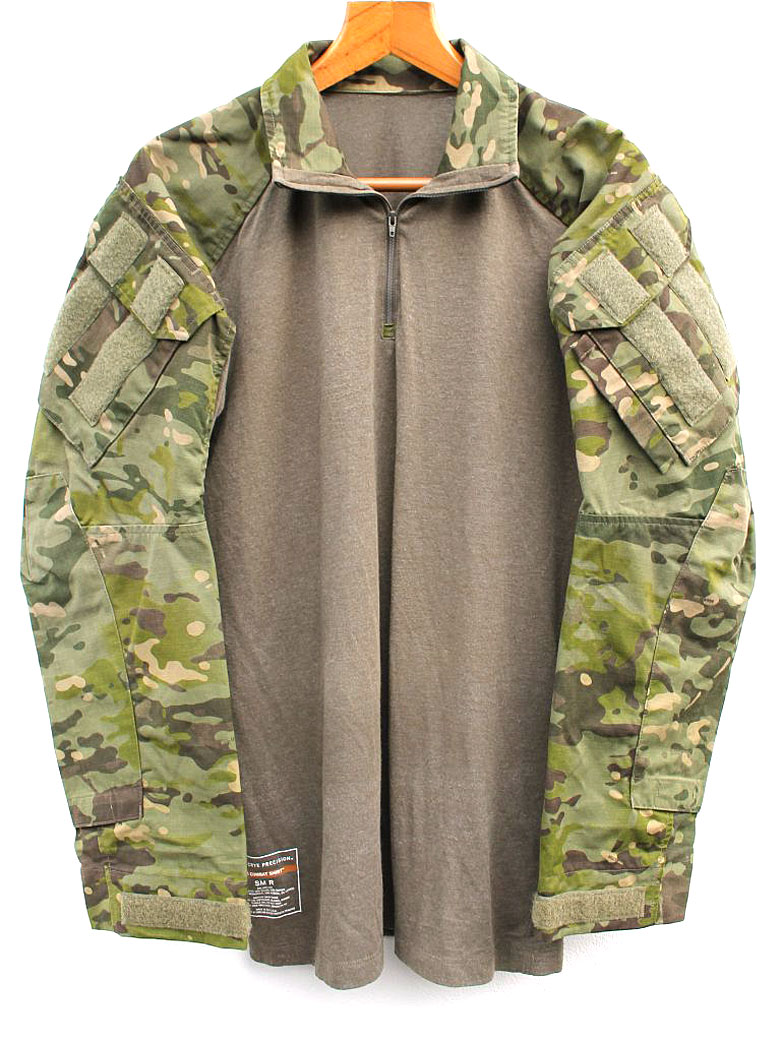
Just like the RAID mod shirt that preceded it, the concept of the combat shirt evolved from a gear modification that various individuals created by combining a base layer t-shirt with a standard camouflage shirt and some innovative tailoring. Using the center torso piece of the t-shirt in place of the BDU shirt body meant that you could stay cooler and more comfortable under your armor, but still have camouflage patterned and abrasion resistant material on your exposed arms. This included having a matching collar to protect the neck from slings, straps, sun and insects.
Crye Precision is most often credited with pioneering this style of shirt in terms of large scale commercial production and the validity of this concept spread rapidly with the introduction of their Generation 1 combat shirt. The idea of this cut is now very much embedded in military equipment doctrine around the world, as well as in the commercial market for tactical and military type kit and equipment. It ‘s honestly quite hard to overstate the benefits of the combat cut shirt in hot climates or any time you expect to be wearing body armor.
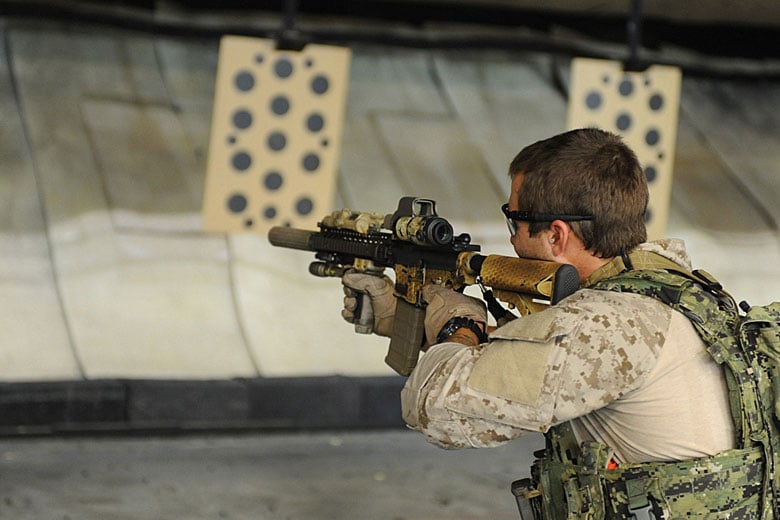
Some of the prominent features of a combat cut shirt are the following:
Thinner Base-Layer Fabric in Center: A thin fabric with stretch in the center, along the lines of a t-shirt you would wear for PT, is what’s most commonly found on these shirts. The exact fabrics used for the trunk of the shirt vary more between manufacturers than the fabrics used in the sleeves and collar, with differing properties in terms of flame hazard protection and moisture management/drying time. Be sure to identify your personal needs and research the fabric selection accordingly.
No Torso Pockets: Equipment storage will usually only be available on the upper arms and occasionally on the forearms with some brands, but this is not usually the standard in design for a combat cut shirt. These arm pockets are usually still mounted externally with pleats or billows for expansion in most cases, though it’s best to not carry too much kit inside them.
The Most “Tucked-In” Friendly: The combination of t-shirt fabric and zero pockets makes the combat shirt ideal for tucking in and use with popular modern PALS belts that feature a hook and loop interface between an inner and outer portion. Along with the raised “Mandarin Collar” to protect the neck, the end result is a much increased level of comfort for the wearer.
Quarter Zip Closure at Top Center: As the combat shirt should generally be worn with no further layers underneath to maximize heat and sweat dissipation in relevant climates, it’s best to simply think of it as your t-shirt. In the unlikely event you happen to find a strange combat shirt with a longer zip than pictured above, it’s best to avoid it, as that can create an uncomfortable pressure area under your armor.
All Hook and Loop Closures: In the place of buttons, most combat shirt closures on bicep pockets and cuffs will feature hook and loop, with a few designs making use of zippers instead. Some very specific kit for Special Operations Forces will add buttons to the hook and loop for extra security, but they’re not a necessity for the majority of users and only hinder access to stowed items, particularly in cold conditions. There will also be fields of loop on the upper arms for display of any patches.
Mounting Pockets for Elbow Pads: These mounting pockets usually feature double layering for durability. Compared to the older style of stand-alone elbow pads that strap around the arms, integrating this joint protection within the shirt is preferable. It greatly lessens movement of the pad away from the desired location, cuts down weight and removes the two straps around the arm which can become uncomfortable and retain a lot of sweat if actually tightened sufficiently to do their jobs.
Despite being the latest and most modern archetype of shirt mentioned here, combat shirts are fortunately very easy to obtain at a relatively low cost. Widespread adoption of the design by most military forces around the world means that these shirts have been manufactured in huge quantities for deploying personnel. There’s an ample supply on the used and surplus market, but not a lot of demand comparatively, which of course works greatly in favor of the buyer.
Many commercial options are available should a non-issued color or pattern be desired, but the greatest value for the money by a very wide margin comes in the form of military surplus combat shirts. For example, the U.S. Army Combat Shirt is made of flame resistant fabric and can be acquired for well under half the cost of any reasonable quality commercial shirt that’s also FR.
Editor-in-Chief’s Note: Be sure to check back soon for the next part of this series, where we’ll be delving into uniform bottoms, as well as materials to consider when purchasing. Also consider checking out our buyer’s guide article on the PCU (Protective Combat Uniform).
Please join us in welcoming Chris Kinnerley as a contributor on ITS. Chris is currently 10 years into his service as an Armament Engineer in the Royal Air Force. He’s humped and dumped a lot of ammo cans and fixed a lot of machine guns, rifles and pistols. Chris spent some time down the Falkland Islands and very briefly took a sunny holiday to Kabul, Afghanistan. When he’s not busy being a REMF he’s pouring over all sorts of gear with a fine tooth comb, from camo apparel and boots to modular pouches and plate carriers. He’d love to own various semi-automatic rifles and pistols but can’t, so he visits the U.S. at least once a year to experience the superb freedoms he wishes he had at home. Visit his personal gear-related site, TheFull9







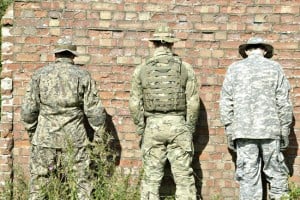
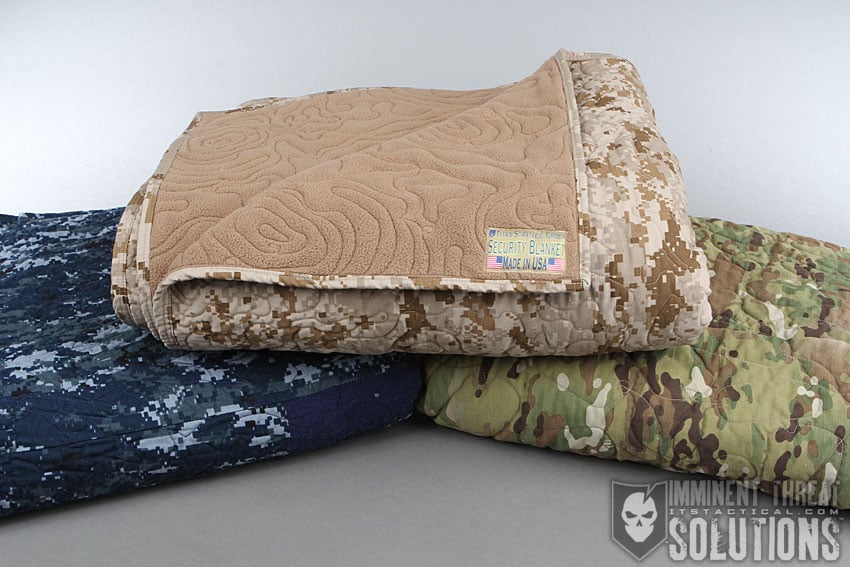
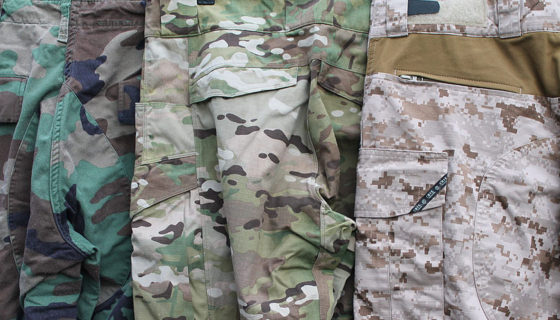

Discussion